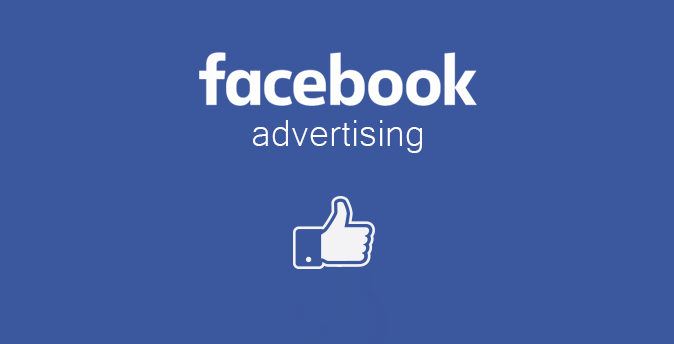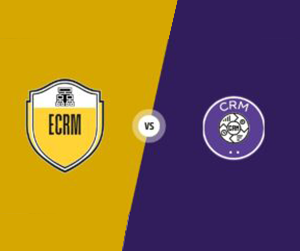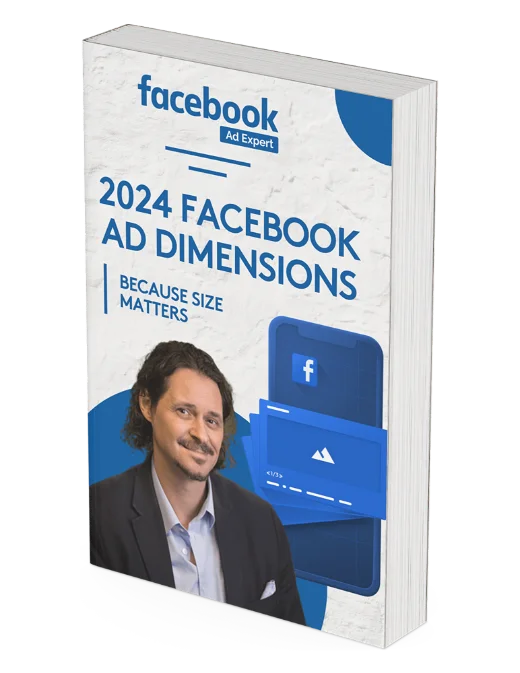Sure, we all use Facebook, but do we really know how to make Facebook ads work for us?
We’re so used to seeing ads as we scroll through Facebook that we might not realize their potential. But for businesses, this is a great way to reach people. How can you make the most of Facebook ads for your business and get a good return on your investment?
What Are the Benefits of Advertising on Facebook?
Facebook’s massive user base of nearly 3 billion active users is hard to ignore. That’s a whole bunch of people seeing Facebook ads all the time.
But here’s the thing: when we talk about effective marketing, it’s not just about reaching a lot of people. It’s about reaching the right people. And this is where Facebook shines.
Facebook is like a wizard when it comes to targeting. It knows so much about its users, and that information helps advertisers connect with the perfect audience for their message.
This magical ability to target specific groups of people has attracted almost 10 million active advertisers and rakes in a whopping $28.6 billion every quarter for Facebook.
The results speak for themselves, making Facebook ads incredibly powerful and, when done right, super profitable.
Who Can Benefit from Advertising on Facebook?
When it comes to Facebook advertising, it’s important to remember that the people you’re reaching aren’t actively searching to buy your stuff. They’re usually relaxing, chatting with friends, or watching funny videos – and then your ad pops up, kind of like an interruption.
Making a sale with just one ad is pretty rare, and it’s even harder on Facebook because people aren’t actively hunting for your products. If you expect quick sales, you might end up feeling disappointed.
Lots of businesses struggle with Facebook ads because it might not be the right fit for them. It’s smart to test new marketing methods, especially before prices go up, but you should also think about whether Facebook matches your business style.
Here are some types of businesses that usually do well with Facebook ads.
Companies with Easy-to-Complete Conversions
Businesses that make it big with Facebook ads aren’t immediately asking users to buy something. Instead, they use a smoother approach.
When someone lands on your website from a Facebook ad, they probably weren’t actively hunting for your product. They clicked your ad out of curiosity. If you’re counting on them to make a purchase right away to make your ad profitable, you might be setting yourself up for disappointment.
Facebook users are a bit unpredictable. If you hit them with a big request (like “buy now”) right off the bat, they might just click back to Facebook. So, it’s better to start with simpler actions, like asking them to sign up for your service, fill out a short form, or share their email address.
Even if you’re selling physical products, think about starting with a smaller step, like getting them to sign up for your newsletter. Later on, you can upsell through email marketing or more Facebook ads.
Daily deal sites like Groupon, AppSumo, and Fab are great examples of businesses that can thrive with Facebook ads. When you click their ads, they simply ask for your email address. They’ll tempt you with a deal later on.
Businesses with Lengthy Sales Processes or Small Transactions
Even if you start by asking for an email address, the goal is to eventually make money from these users for your ads to be profitable.
The best approach with Facebook ads is to have a business model that earns revenue from users over time, rather than all at once. Users may give you their email, but it takes time to build trust before they’re likely to make a purchase.
Instead of relying on one big purchase, aim for several smaller ones. Daily deal and subscription sites are great examples because they have customers whose value stretches over six months or more.
Let’s take Udemy, for instance. They focus on getting users to sign up during their first visit. They aim to make their ad spending profitable within six months, not in a single day. This turns Facebook users into long-term customers.
They set a goal of getting a 20 percent return on ad spending on day one and a 100 percent return within six months. You can use these numbers as a rough guide for your own business.
How Facebook Ads Function?
Facebook ads have evolved and now offer a variety of options. You can promote your Page, posts on your Page, user actions, or even your website. Even though Facebook is more focused on keeping traffic on its site, you can still succeed in directing users to your website.
There are different ad formats to choose from, such as images, videos, carousels (multiple images), Instant Experiences, and collections.
When it comes to targeting, Facebook allows you to reach users based on their location, demographics, and profile details. Many of these targeting options are exclusive to Facebook.
Once you’ve created an ad, you’ll need to set a budget and bid for each click or every thousand times your ad is shown (impressions). This helps you control your ad’s reach and cost.
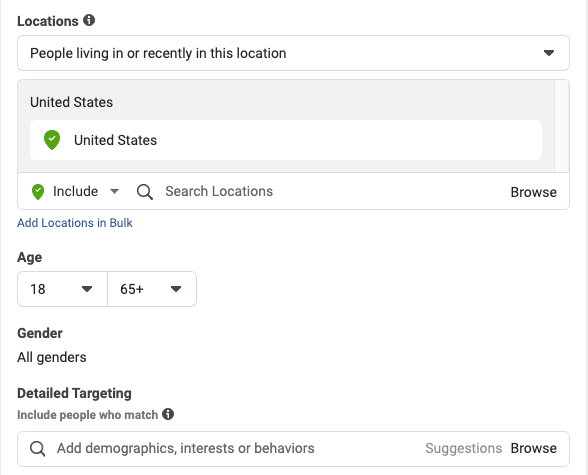
Users will encounter your ads either in the sidebar on Facebook or within their newsfeed.
For marketers, the primary aim is often to guide traffic to their own websites. While boosting your Facebook presence is valuable, bringing visitors to your website gives you control over the platform, offering the best opportunity to achieve your objectives.
Although Facebook’s other ad choices are effective for enhancing engagement and raising brand awareness, ads that direct users away from the platform are still the top choice for advertisers seeking immediate results, like making a sale.
9 Essential Tips for Crafting Effective Facebook Ads
Facebook advertising is full of potential, but it’s not as simple as writing some text and expecting sales to pour in. Achieving success with Facebook Ads requires a thoughtful approach and continuous optimization until you discover the perfect strategy.
Here are nine valuable tips to help you fine-tune your Facebook ad campaigns.
1. Optimise Your Facebook Ad Targeting
At the beginning of this article, we asked: why should you advertise on Facebook? We pointed out two main reasons: its extensive reach and its unparalleled targeting capabilities.
However, many businesses miss out on the incredible targeting options available to them. They often opt for a “bigger is better” approach, when what truly matters is putting your products or services in front of the people who need them the most.
The number one mistake most marketers make with Facebook ads is not using targeting effectively.
Facebook’s ad targeting features are exceptional. You can target users based on demographics and create custom or lookalike audiences to reach users similar to your best customers. Additionally, you can employ retargeting ads to connect with users who have engaged with your page or visited your website.
On Facebook, you can directly target users based on:
- Location
- Age
- Gender
- Interests
- Connections
- Relationship status
- Languages
- Education
- Workplaces
Each of these options can be valuable, depending on your target audience. However, for most marketers, it’s advisable to focus on location, age, gender, and interests:
- Location allows you to target users in the specific country, state, city, or zip code that you serve.
- Age and gender targeting should align with your existing customer base. If, for example, women aged 25-44 make up the majority of your customers, start by targeting them. If this proves profitable, you can then expand your targeting.
- Interest targeting is a powerful but often misused feature of Facebook ads. When creating an ad, you have two options: broad categories or detailed interests.
Broad Interest-Based Targeting
Broad interest categories on Facebook encompass topics such as Gardening, Horror Movies, and Consumer Electronics. In recent times, Facebook has introduced newer targeting options like Engaged (1 year), Expecting Parents, Away from Hometown, and Has Birthday in 1 Week.
While broad interests might appear to be an efficient way to reach a large audience, these users often come at a higher cost and tend to spend less. Additionally, you’ll need to implement the Facebook pixel.
In the past, this approach was less effective, but with the introduction of the Facebook pixel and dynamic ads, it has become more potent. It’s worth experimenting with, but detailed interest targeting often proves to be more effective in reaching your desired audience.
Precise Interest-Based Targeting
Detailed Interest targeting is a powerful tool that lets you reach users based on the information in their profiles, including their listed likes, interests, the Pages they follow, the apps they use, and other content they’ve shared on their profiles, according to Facebook.
To get the best return on investment (ROI), Detailed Interest targeting is your go-to choice.
Facebook offers an incredible range of interests to target, spanning from Harry Potter fans to underwater rugby enthusiasts. The challenge lies in selecting the right ones.
When you use Detailed Interest targeting, Facebook provides audience size information and suggests other relevant likes and interests. While you won’t have access to competitive data, once you select interests for an ad, Facebook will display an aggregated suggested bid.
Here’s a key tip: Avoid the common mistake of targeting the largest groups available, as they tend to be more expensive and less focused. Instead of going for broad terms within your niche like “yoga” or “digital photography,” zero in on specific interests. Do some research to find out which magazines and blogs your customers read, who they follow on Twitter, and what related products they purchase.
For instance, if you’re selling a new DJ course, don’t settle for targeting the general “disc jockey” interest. Instead, create ads that target DJ publications like DJ Magazine and Mixmag. Then, create separate ads targeting DJ brands such as Traktor and Vestax.
Combine these smaller, related interests into a group with an audience size ranging from 50,000 to 1 million or more. This approach will help you create ads with sizable yet highly targeted audiences, increasing the likelihood of conversions.
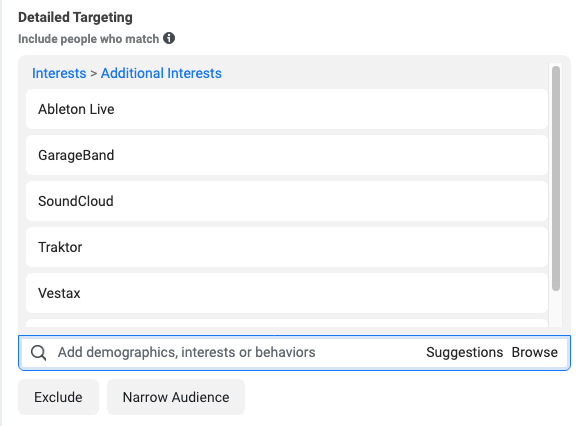
Here’s an advanced tip:
Implement Facebook Login as a sign-up option on your website. When users choose to connect via Facebook, you gain access to valuable insights about their interests. Take these interests and cross-reference them with the number of fans or followers of the corresponding Facebook Pages. This process will help you identify your high-affinity interests.
By doing this, you can gain a deeper understanding of your audience’s preferences and pinpoint the interests that have the strongest connection with your target demographic. This information can be invaluable for refining your ad targeting and creating more effective Facebook advertising campaigns.
Facebook Lookalike Audiences
In addition to targeting users directly, Facebook offers the option to create Lookalike Audiences. These are Facebook users who share similarities with your existing customer base. To create Lookalike Audiences, you’ll need to have Facebook Pixel installed or other custom audience data, such as an email list. Then, you can ask Facebook to find users who resemble your current customers.
Lookalike Audiences are highly customizable. For instance, you could create an ad campaign targeting “new customers” and exclude your current customers from seeing these ads.
If you’re interested in creating Lookalike Audiences, you can visit Facebook’s official page, which provides step-by-step instructions on how to set them up effectively.
Retargeting Through Facebook Advertising
Retargeting ads are a powerful tool for reaching customers who are already acquainted with your brand. You can take it a step further by crafting dynamic ads that display products or content individuals are likely to find interesting.
For instance, you can retarget users who have previously visited your website, left items in their shopping cart, or engaged with one of your ads.
To set up a retargeting ad, the initial step is to install the Facebook Pixel. You can refer to a guide on remarketing for detailed instructions. The key to success here is creating multiple touchpoints with potential customers, reinforcing your brand and offerings to increase the likelihood of conversion.
2. Include Images
Facebook is a highly visual platform. Think about it—how often do you stop to read a post that’s entirely text-based compared to one that includes engaging videos or eye-catching images?
When it comes to your Facebook ad, the image is the most critical component. You could have the most brilliant ad copy in the world, but if your image doesn’t grab a user’s attention, you won’t get those clicks.
Here’s what not to do: avoid using low-quality images, generic stock photos, or any images you don’t have the rights to use. Don’t simply grab images from Google Images. Unless you’re a well-known brand, it’s usually best not to feature just your logo.
Now, let’s discuss how advertisers should source images. You can either purchase them, create your own, or use images with a Creative Commons license.
Here are some strategies to make your images stand out on the platform:
People: Images of people tend to work best, particularly close-ups of attractive faces that resemble your target audience.
Typography: Clear and readable text in your images can also help attract clicks. Using bright colors can make your ad stand out.
Humor: Quirky or funny images can definitely grab attention. However, it’s important to note that these ads don’t always convert well. If you choose to use this style of ad, start with a small budget and closely monitor its performance.
Rotate Ads: Within each campaign, aim to have at least three ads targeting the same audience. This allows you to collect data on each ad. Eliminate the ads with the lowest click-through rates (CTR) and create new versions of the ones with the best CTRs.
The average CTR for Facebook advertising across all industries is around 0.89 percent. Therefore, continuously improving your image selection can help you surpass this benchmark.
3. Write Great Copy
After catching a user’s eye with your image, your ad text comes into play. This is where you can persuade them to click and learn more about your product or service. Despite the character limits (40 for the headline and 125 for the body text), you can still employ the famous copywriting formula AIDA:
(A)ttention: Grab the user’s attention with a compelling headline.
(I)nterest: Get them interested by highlighting a key benefit of your product or service.
(D)esire: Stoke their desire with a special offer, like a discount, free trial, or limited-time deal.
(A)ction: Conclude with a strong call to action.
Fitting all of this into 165 characters can be challenging, so it’s a good idea to write multiple ads until you can craft a concise sales pitch. Here’s an example for an online programming course:
- Attention: “Unlock Your Coding Potential!”
- Interest: “Master Programming from Scratch”
- Desire: “Get Started with a 7-Day FREE Trial!”
- Action: “Enroll Now & Code Your Future!”
Remember, the goal is to create a compelling ad that entices users to take action and click through to your offer.
4. Follow Facebook Ad Bidding Tips for Better Results
Just like on any advertising platform, strategic bidding on Facebook can make all the difference between a profitable campaign and one that falls flat.
Once you’ve created your ad, Facebook will suggest a bidding range. If you’re just getting started, it’s a good idea to set your bid toward the lower end of this range. Your Click-Through Rate (CTR) will play a significant role in determining the cost of your traffic.
Here’s how it works: if your CTR is high, your suggested bids will decrease. However, if your CTR is low, you’ll need to bid more for each click. The key to success is to continually optimize your ads and targets to increase your CTR.
Beyond just the cost per click, your bid also influences the size of your target audience you can reach. Facebook provides a helpful chart for each campaign, showing the size of your target audience and how much of that audience you’ve managed to reach.
So, monitoring and adjusting your bidding strategy based on CTR and audience reach can significantly impact the effectiveness and cost-efficiency of your Facebook advertising campaigns.

Increasing your bid can indeed expand the reach of your ad, helping it reach more of your intended audience. If your ad is performing effectively but you’re not reaching at least 75 percent of your target audience, raising your bid can lead to more clicks and broader exposure.
Conversely, if your ad has already achieved a high level of audience penetration, increasing your budget will mainly impact the ad’s frequency. This means that the same targeted users will see your ad more times, potentially reinforcing your message and increasing brand recall.
Understanding when to adjust your bid and when to increase your budget is essential for optimizing your Facebook advertising campaigns and achieving your specific marketing objectives.
5. Build a Landing Page for Your Facebook Advertisement
Getting people to click on your Facebook ad is just the first step. Your ultimate return on investment (ROI) depends on the actions people take once they land on your page.
Getting a click is merely the start; you need those visitors to convert.
To achieve this, it’s crucial to direct people to a well-optimized, targeted landing page that is designed for high conversion rates. Since you have information about their age, gender, and interests, tailor the landing page to address their specific needs and problems.
Ensure that your landing page includes the registration form or email submission box that you’ll track as a conversion. Keep your landing pages simple and focused. Avoid overwhelming visitors with too many choices; instead, provide them with the information they need to make an informed decision and guide them towards one specific action.
For example, if you want visitors to sign up for your newsletter, highlight the benefits of subscribing or offer a valuable free gift in exchange for their email address. This approach increases the likelihood of conversion and boosts the overall effectiveness of your Facebook advertising campaign.
6. Monitor How Well Your Facebook Ad Is Doing
Facebook Ads Manager provides extensive data on how people engage with your ads, but it may not offer the same depth of insights once users click through to your website. To gain a more comprehensive understanding of user behavior on your site, it’s essential to utilize an analytics program like Google Analytics.
By tagging your links using tools like Google’s URL builder or your own tracking tags, you can effectively monitor how traffic from your Facebook ads interacts with your website. This approach enables you to assess the effectiveness of your ads based on various factors, such as lead generation, the number of sales, and total revenue generated. Using robust analytics tools complements your Facebook Ads Manager data and provides a more holistic view of your advertising efforts’ performance.
Conversion Tracking
As previously mentioned, it’s crucial to organize your campaigns into distinct interest groups so you can analyze their individual performance. To track these groups effectively, consider using Google Tags and leverage the utm_content parameter to differentiate between various ad sets within your campaigns.
Tracking at the ad level can be particularly valuable when you’re experimenting with eye-catching images and when you haven’t yet established a baseline Click-Through Rate (CTR) and conversion rate. By closely monitoring ad-level data, you can gather insights into which images and ad creatives resonate most with your audience and optimize your campaigns accordingly. This approach helps you refine your advertising strategy and improve your overall campaign performance.
Performance Tracking
Monitoring your performance within the Facebook interface is crucial to ensure the success of your ad campaigns. The key metric to track is the Click-Through Rate (CTR). CTR significantly impacts both the number of clicks your ads receive and the cost per click.
Ads with a low CTR may either stop serving or become more expensive over time. On the other hand, ads with a high CTR are likely to generate as many clicks as your budget allows and cost less per click. It’s vital to closely monitor CTR by interests and individual ads to determine which target audiences work best and which ad creatives resonate with them.
Keep in mind that even the most effective ads will experience a decline in performance over time. This decline occurs more rapidly with smaller target audiences. Typically, you’ll start to see a drop in traffic within 3-10 days.
When this decline happens, consider refreshing your ads with new images and copy. Rather than editing the existing ad, duplicate it and then modify the image and ad text. Additionally, delete any existing ads that aren’t generating clicks. By the next day, your new ads should start accumulating impressions and clicks.
Continually monitor the performance of your images over time to identify which ones consistently achieve the best CTR and maintain their traffic. You can reintroduce high-performing images every few weeks until they no longer generate clicks. This proactive approach helps ensure that your ads remain engaging and effective.
7. Set a Practical Facebook Advertising Budget
Determining a realistic Facebook advertising budget involves a straightforward equation that considers how many impressions you need to achieve a specific number of sales, resulting in a desired revenue. Here’s how to approach it:
Start by asking yourself these fundamental questions:
- What is the value of your product or service?
- How many units do you want to sell?
- What is your current conversion rate?
Let’s use some sample answers for illustration:
- Product value: $100
- Target sales: 10 units
- Current conversion rate: 1 percent
If your goal is to generate $10,000 in revenue, you’ll need to sell 1,000 units. Given your 1 percent conversion rate, this means you’ll require 100,000 impressions. Now, multiply your average Cost Per Click (CPC) by 100,000 to get a rough estimate of your budget.
To break this budget down, consider the duration of your campaign, and you’ll arrive at your daily budget.
Once you’ve defined your budgets, select a campaign objective that aligns with your goals. Facebook offers objectives like “Conversions” or “Link Clicks” for Ad Delivery Optimization, which can help you achieve better results based on your campaign objectives. Choosing the right objective ensures that Facebook’s algorithms are optimized to assist you in reaching your desired outcomes.
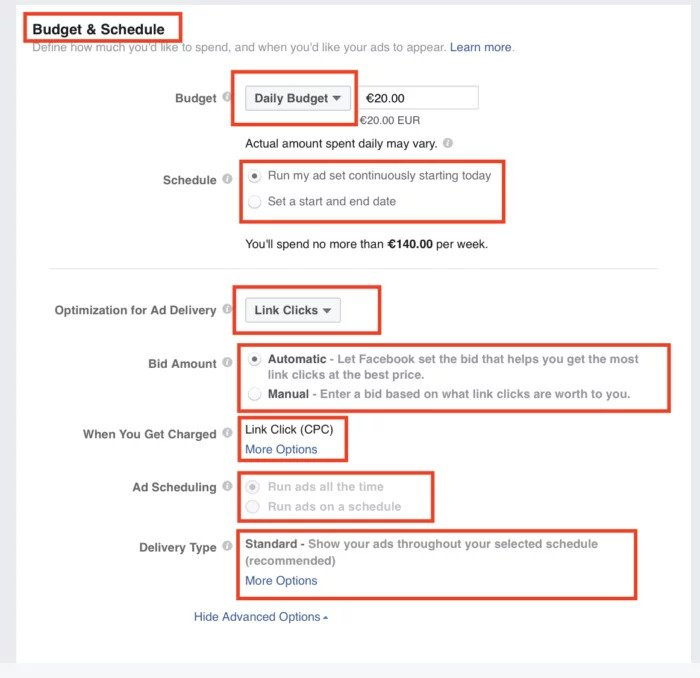
While it might be tempting to be skeptical of Facebook’s suggested costs per click, these recommendations can be incredibly useful. Social media platforms like Facebook operate in a highly competitive space, and they understand that if they don’t deliver results for advertisers, those advertisers may turn to other platforms.
As a result, Facebook has developed effective ad delivery optimization tools. These tools are particularly valuable if you’re just getting started with Facebook advertising. They are designed to help you make the most out of your ad budget and reach your campaign objectives efficiently. So, it’s a good practice to consider Facebook’s suggestions and leverage these optimization tools to enhance the effectiveness of your advertising efforts on the platform.
8. Set Up Your Facebook Business Page
If you haven’t already created a business page, it’s essential to do so in order to take advantage of all the advertising options that Facebook offers. Here’s how you can create a business page:
- Go to the Facebook Create Page website (https://www.facebook.com/pages/create).
- Enter your page name. This should be the name of your business or the entity you want to promote.
- Select a category that best describes your business or page type. Facebook provides a list of categories to choose from.
- Provide a brief description of your page. This description helps visitors understand what your business is about.
- Click the “Create Page” button to create your business page.
Once your business page is set up, you can start creating and running ads to promote your products or services to a wider audience on Facebook.
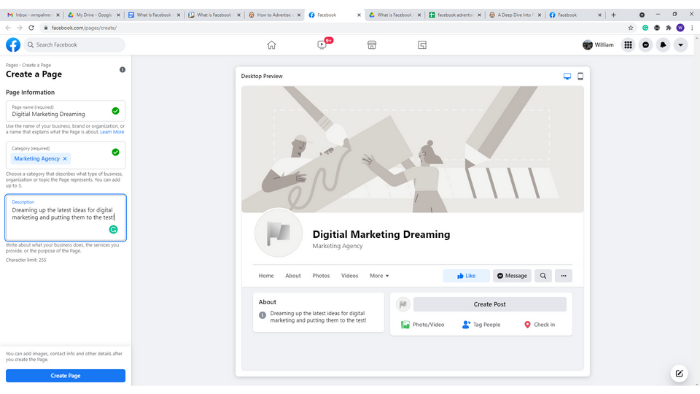
Type in keywords related to your business in the category bar. You’ll get helpful options to choose from.
Fill in all your information, and then click the “Create Page” button.
You’ll be asked to add a profile picture and cover photo. Once you do that and save it, your page is good to go.
Start filling out your page by following the simple setup steps provided.
You’ll find a list of tasks to complete. One important task is setting up your “Call to Action.” This is what encourages people to visit your website. Choose a phrase that inspires action, like “Sign Up” if it makes sense for your business.
That’s it! You’re all set and ready to go and start running Facebook ads!
9. Experiment with A/B Testing for Your Ads
Here’s a little secret:
nobody knows which ad will perform the best right from the start. It’s impossible to predict. So, the key to creating a profitable ad campaign is to test different options and see which one works best.
To do this, you can take an existing ad and make a few minor tweaks to run a split test. The ads will be mostly the same, so it won’t require a lot of extra work, and you can set up a split test in just a few minutes.
Here’s how:
- Go to your Ad Manager main table.
- Click on the ad or campaign you want to duplicate.
- Look for the “duplicate” button next to “edit.”
- Select “New Split Test Category” and choose the number of copies. Start with two to try a few different versions.
- Click “Duplicate,” and you’ll be taken to a new ad screen.
When you make changes, be careful. It’s best to change only one thing for each copy so you can pinpoint which changes impact the success of your ad. The only way to figure out what works and what doesn’t is by altering a single element in each ad and comparing the results.
Why?
Imagine you change both the copy and the image for the second ad, and then you make these changes again to create a third ad. How will you know what made ad B better than ad A and, eventually, ad C better than ad B?
Was it the new image? The updated headline? Perhaps the Call to Action (CTA)?
The only way to be absolutely certain about which changes led to better results is by altering one thing at a time.
There’s another important aspect of split testing to consider. Facebook ads can experience ad fatigue after a while. This means that the ad’s performance starts to decline after a few days or weeks.
Initially, this might be surprising. You won’t know why your previously successful ad suddenly isn’t performing as well.
Frequently conducting split tests like this will help you avoid ad fatigue. It keeps your ad content “fresh” so that your audience doesn’t become tired of seeing the same ad every time they log into Facebook. The best part is that you don’t have to make significant changes to prevent ad fatigue—small tweaks can suffice.
For instance, you might take the same ad but simply change the background color, rearrange the layout, or test a new headline.
The goal is not to completely abandon what’s working. Finding a successful ad can be challenging, and it’s important to stick with it. Instead, test small variations to ensure that the ad’s performance remains consistent and doesn’t suddenly drop off.
Despite the learning curve, Facebook advertising can be a highly effective marketing channel for the right business. Here are the key takeaways to remember:
- Target specific interests: Focus on reaching the right audience by targeting specific interests that align with your business.
- Use eye-catching images: Create visually appealing ad images that grab users’ attention as they scroll through their Facebook feeds.
- Offer a low-friction conversion: Encourage users to take action with a simple and easy conversion process, such as signing up for a newsletter or providing their email.
- Track everything: Use analytics tools to monitor your ad performance and make data-driven decisions.
By following these tips and experimenting with your approach, you can effectively capture people’s attention on a crowded platform and use Facebook advertising to drive user action. After a period of learning and optimization, you can establish a consistent source of Facebook conversions for your business.

